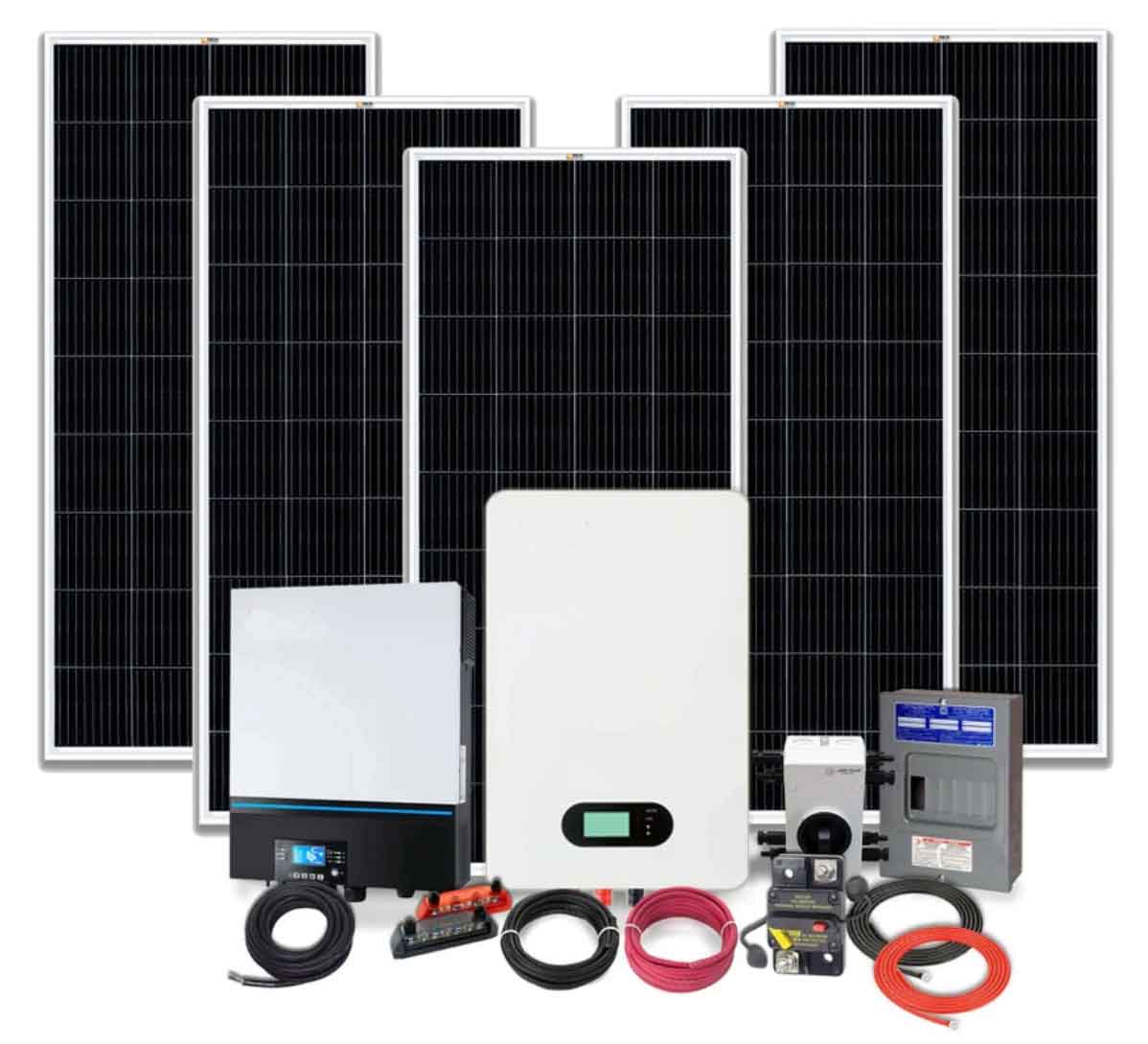As homeowners increasingly seek sustainable and cost-effective energy solutions, solar kits have emerged as a popular choice. Solar kits offer a convenient and efficient way to harness the power of the sun to generate electricity for your home. This comprehensive guide will explore the various aspects of solar kits, including their components, benefits, installation process, maintenance, and financial considerations.

What Are Solar Kits?
Solar kits are pre-packaged systems designed to provide homeowners with everything they need to install and operate a solar power system. These kits typically include solar panels, inverters, mounting hardware, wiring, and other essential components. Solar kits come in various sizes and configurations, making it easy for homeowners to find a system that suits their energy needs and budget.
Components of a Solar Kit
- Solar Panels
- Monocrystalline Panels: Known for their high efficiency and sleek design.
- Polycrystalline Panels: More affordable but slightly less efficient than monocrystalline panels.
- Thin-Film Panels: Flexible and lightweight, suitable for specific applications.
- Inverters
- String Inverters: Connect multiple solar panels in series.
- Microinverters: Attached to individual solar panels for optimized performance.
- Power Optimizers: Work with string inverters to enhance efficiency.
- Mounting Hardware
- Roof Mounts: Designed for standard roof installations.
- Ground Mounts: Suitable for open land installations.
- Pole Mounts: Elevated installations for maximum sunlight exposure.
- Wiring and Connectors
- Ensure safe and efficient electrical connections between components.
- Monitoring Systems
- Basic Monitoring: Tracks energy production and system performance.
- Advanced Monitoring: Offers detailed insights and remote access capabilities.
Benefits of Solar Kits
- Cost Savings
- Reduced Electricity Bills: Generate your own electricity and lower your utility expenses.
- Tax Incentives and Rebates: Take advantage of federal, state, and local incentives.
- Environmental Impact
- Renewable Energy Source: Solar power reduces reliance on fossil fuels.
- Reduced Carbon Footprint: Lower greenhouse gas emissions.
- Energy Independence
- Self-Sufficiency: Generate your own electricity and reduce dependence on the grid.
- Backup Power: Some kits include battery storage for power during outages.
- Increased Property Value
- Attractive to Buyers: Homes with solar systems are often more appealing to potential buyers.
- Higher Resale Value: Solar-equipped homes can sell at a premium.
Installing a Solar Kit
- Site Assessment
- Evaluate the suitability of your property for solar installation.
- Consider factors such as roof condition, orientation, shading, and available space.
- System Sizing
- Calculate your energy needs to determine the appropriate system size.
- Use historical electricity usage data for accurate sizing.
- Permitting and Approvals
- Obtain necessary permits from local authorities.
- Comply with zoning regulations and building codes.
- Installation Process
- Mounting: Install the mounting hardware on the roof or ground.
- Panel Placement: Attach the solar panels to the mounts.
- Wiring: Connect the panels to the inverter and electrical system.
- System Testing: Ensure proper operation and safety of the system.
Maintenance of Solar Kits
- Regular Inspections
- Check for debris, dirt, and damage on solar panels.
- Inspect wiring and connections for wear and tear.
- Cleaning
- Clean panels periodically to maintain efficiency.
- Use non-abrasive cleaners and soft brushes or cloths.
- Monitoring System Performance
- Use monitoring systems to track energy production.
- Address any performance issues promptly.
- Professional Maintenance
- Schedule professional inspections and maintenance as needed.
Financial Considerations
- Initial Costs
- Solar kit prices vary based on system size and components.
- Installation costs can add to the overall expense.
- Financing Options
- Solar Loans: Borrow funds to purchase and install the system.
- Leasing: Lease a solar system for a fixed monthly fee.
- Power Purchase Agreements (PPAs): Pay for the electricity generated by the system.
- Incentives and Rebates
- Federal Tax Credit: Claim a percentage of the installation cost as a tax credit.
- State and Local Incentives: Explore additional rebates and credits.
- Return on Investment (ROI)
- Calculate the payback period based on energy savings and incentives.
- Consider long-term financial benefits and increased property value.
Solar Kit Comparison Table
| Feature | Monocrystalline Panels | Polycrystalline Panels | Thin-Film Panels |
|---|---|---|---|
| Efficiency | High | Moderate | Low |
| Cost | Higher | Lower | Variable |
| Durability | High | High | Moderate |
| Aesthetic Appeal | Sleek, Black | Blue, Textured | Flexible, Thin |
| Space Efficiency | High | Moderate | Low |
Steps to Choose the Right Solar Kit
- Assess Your Energy Needs
- Review your electricity bills to understand your average consumption.
- Evaluate Your Property
- Determine the best location for installation based on sun exposure.
- Research Solar Kit Options
- Compare different kits based on efficiency, cost, and warranty.
- Consult with Professionals
- Seek advice from solar installers to ensure optimal system design.
- Consider Future Expansion
- Choose a system that allows for easy expansion if your energy needs increase.
Conclusion
Solar kits offer homeowners an accessible and efficient way to embrace renewable energy and reduce their reliance on traditional power sources. By understanding the components, benefits, installation process, maintenance requirements, and financial considerations, homeowners can make informed decisions about investing in solar energy. With the right solar kit, you can enjoy significant cost savings, environmental benefits, and energy independence while increasing the value of your home.
